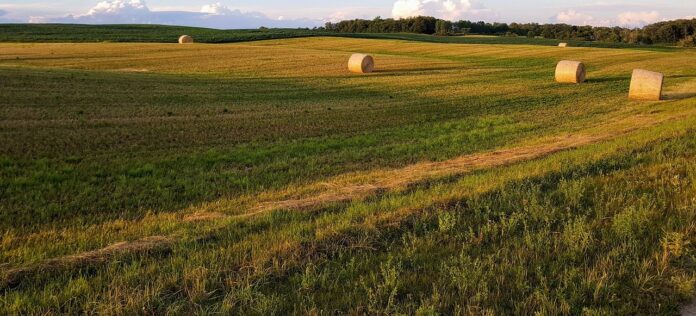Hay, a vital feed resource for livestock, needs to be of high quality to ensure animal health and productivity. Unfortunately, when hay gets rained on during the curing process, its quality can be significantly compromised. That’s why understanding how rain affects hay and what can be done to mitigate these effects is crucial.
How rain affects hay
Rain during the hay curing process can lead to several issues. One primary concern is the leaching of nutrients. Rainwater can wash away essential nutrients like carbohydrates, proteins and minerals, reducing the overall feeding value of the hay. Even a light rain can cause substantial nutrient losses.
Another significant issue is the increased risk of mold and microbial growth. Wet hay creates an ideal environment for fungi and bacteria to thrive. These microorganisms degrade the nutritional quality of the hay and can produce harmful mycotoxins, posing health risks to livestock. Moldy hay can lead to respiratory issues and other health problems in animals.
Nutrient losses and dry matter reduction. The extent of nutrient leaching depends on the intensity and duration of the rain. Heavy rain or prolonged exposure results in more substantial losses compared to brief showers. Leaching primarily affects soluble components like non-structural carbohydrates and certain minerals, decreasing the overall energy content.
Dry matter losses are also a critical concern. Rain causes physical disintegration of the hay, especially the leaves, which are the most nutrient-dense part of the plant. As leaves break down and fall off, the remaining hay has a higher proportion of stems, which are less digestible and lower in nutritional value. Depending on the severity of the rain event, dry matter losses can range from 5% to 20%.
Mitigation strategies
To mitigate the adverse effects of rain on hay quality, several strategies can be employed. Timely harvesting and weather monitoring are essential. Producers should aim to cut hay when there is a clear weather window to allow adequate drying time before baling. Using preservatives and hay conditioners can also enhance the drying process, reducing the risk of nutrient loss and microbial growth. Proper storage is another critical factor. Once baled, hay should be stored in a dry, well-ventilated area to prevent further moisture accumulation. If hay must be stored outside, using covers or tarps can protect it from additional rainfall.
Conclusion
Rain can have a significant impact on hay quality, leading to nutrient losses, increased microbial contamination and reduced feed value. Understanding how rain affects hay and implementing proactive measures can help producers ensure their hay remains a valuable feed resource for their livestock. By carefully managing hay curing and storage, producers can maintain high-quality hay even in challenging weather conditions.













